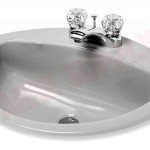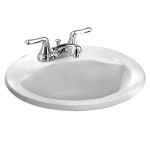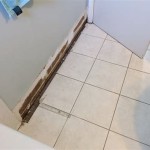Installing a Bathroom Exhaust Fan Duct Through a Soffit Vent
Proper ventilation is crucial for a healthy and comfortable bathroom environment. Exhaust fans remove moisture and odors, preventing mold and mildew growth and improving air quality. In some homes, installing a bathroom exhaust fan duct through a soffit vent offers an efficient and discreet way to vent the fan outside. This article will guide you through the steps involved in this process, detailing the necessary materials, safety precautions, and installation techniques.
1. Planning and Preparations
Before embarking on the installation process, careful planning and preparation are essential. Start by determining the most suitable location for the soffit vent.
Consider the following factors:
- Accessibility: Choose a location that allows for easy access to the soffit area for duct installation and future maintenance.
- Distance from the Exhaust Fan: Minimize the duct run to reduce air resistance and improve airflow efficiency. A shorter duct run will also limit the potential for noise and condensation buildup.
- Existing Ventilation: If the soffit area already has a vent, consider whether it can be repurposed for the bathroom exhaust fan.
- Building Codes: Consult local building codes and regulations regarding bathroom exhaust fan ventilation requirements and soffit vent installation standards.
Once the location is selected, gather the necessary materials, including:
- Exhaust Fan: Choose an appropriately sized and rated fan for your bathroom. Consider the bathroom's size, airflow requirements, and noise levels.
- Ducting: Select rigid or flexible duct material suitable for bathroom exhaust applications. Rigid duct offers greater structural integrity, while flexible duct provides flexibility for navigating tight spaces. Ensure the chosen duct material is compatible with the exhaust fan's outlet dimensions.
- Soffit Vent: Choose a vent specifically designed for exhaust fan applications, allowing for proper air discharge and preventing backdrafting. Consider the vent's diameter, material, and aesthetic compatibility with your home's exterior.
- Flashing Material: Use flashing material to seal the vent against the soffit to prevent water intrusion. Select weather-resistant flashing that is compatible with the soffit material.
- Fasteners: Choose appropriate fasteners to secure the ductwork, vent, and flashing materials. Ensure that the fasteners are compatible with the materials being used and provide adequate holding power.
- Safety Gear: Wear safety glasses, work gloves, and a dust mask to protect yourself from dust, debris, and potential hazards.
2. Installing the Exhaust Fan and Ductwork
The installation process begins with mounting the exhaust fan in the bathroom. Follow the manufacturer's instructions for proper installation and electrical wiring. Once the fan is installed, connect the ductwork to the fan's outlet.
Consider the following points:
- Ducting Connections: Ensure that the connections between the ductwork and the fan are secure and airtight. Use duct tape or clamps to prevent leaks and maintain optimal airflow.
- Duct Run Routing: Route the ductwork from the bathroom exhaust fan to the soffit vent location. Consider the shortest and most direct path, minimizing bends and curves to minimize air resistance. Avoid running the ductwork through areas where it could be damaged or obstruct other systems.
- Ducting Support: Secure the ductwork to the structural components of the home using duct hangers or clips to prevent sagging and maintain a secure connection.
3. Installing the Soffit Vent and Flashing
Once the ductwork is installed, the next step is to install the soffit vent at the designated location. Use a drill and appropriate drill bits to create the necessary holes for the vent and its fasteners.
Follow these steps in installing the vent:
- Vent Installation: Carefully insert the vent into the prepared hole in the soffit. Ensure that the vent is properly aligned and flush with the soffit's surface. Secure the vent with screws or nails, ensuring that the fasteners penetrate the soffit material for a secure hold.
- Flashing Installation: Install flashing material around the vent to prevent water from entering the soffit area. Carefully cut and shape the flashing to match the vent's dimensions and the angle of the soffit. Use screws or nails to secure the flashing to the vent and soffit. Seal any gaps between the flashing and the vent or soffit with sealant to ensure a watertight seal.
- Duct Connection: Connect the ductwork to the soffit vent. Ensure that the connection is secure and airtight. Use duct tape or clamps to secure the connection and prevent leaks.

Soffit Exhaust Vent Installation Dundas Jafine

Adding A Bathroom Fan Fine Homebuilding
Bathroom Exhaust Fans Building America Solution Center

Venting A Bath Fan In Cold Climate Fine Homebuilding

Everbilt 4 In To 6 Soffit Exhaust Vent Sevhd The Home Depot

Installing A Bathroom Fan Fine Homebuilding

How To Install A Bathroom Roof Vent Family Handyman

Blog

Venting Bathroom Exhaust Air Greenbuildingadvisor

How To Replace And Install A Bathroom Exhaust Fan From Start Finish For Beginners Easy Diy
Related Posts







